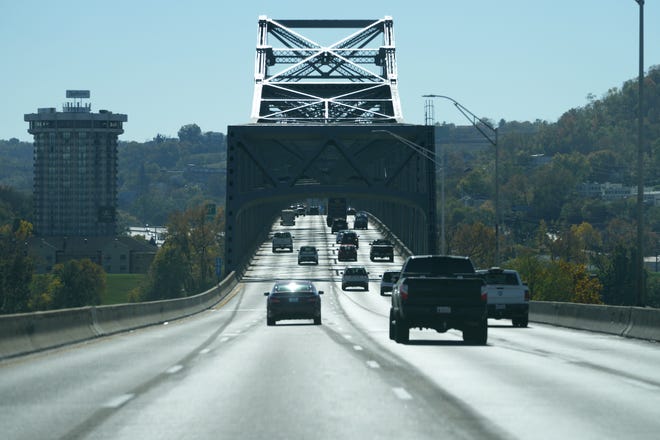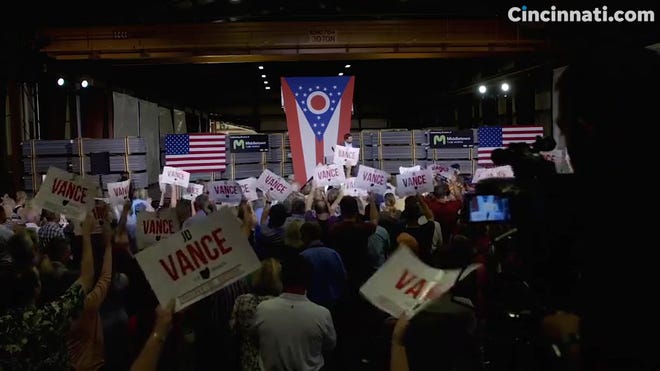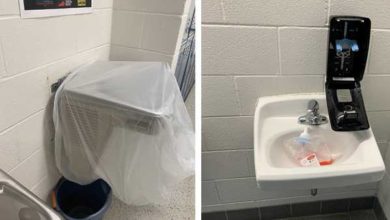

President Joe Biden will sign a $1.2 trillion infrastructure bill on Monday that boosts funding for roads, bridges and public transportation across the country.
For Ohio, the impending law could mean a whole host of things: Money for Columbus transportation projects, a new bridge to ease congestion on the Brent Spence Bridge, broadband in Appalachia and maybe even Amtrak routes.
A closer look:Here's how Columbus and Ohio could benefit from infrastructure bill
Federal and local officials say it's too soon to tell how the money could be spent in the Buckeye State in the coming years, but ground could start breaking on some projects as early as next year.
"These communities are ready for this," Sen. Sherrod Brown said.
Politics of new federal infrastructure bill
House lawmakers OK'd the infrastructure package on Nov. 5 after months of infighting among Democrats over how to proceed with that legislation and a social spending bill. Biden will hold a signing ceremony on Monday to tout a win for his administration as he fights low approval ratings.
Ohio Politics Explained podcast:Protest laws, infrastructure and a Medicaid lawsuit
The bill's passage is also a victory for retiring Sen. Rob Portman, who led negotiations with the White House and a bipartisan group of senators.
"It’s a model, and I hope it can be the beginning of a renewed effort to work together on big issues that face our country," Portman said.
While Portman and Brown both supported the bill, it failed to get bipartisan support among Ohio's House delegation. Rep. Anthony Gonzalez, who will not seek reelection next year, was the sole Republican to vote yes along with Democratic Reps. Tim Ryan, Joyce Beatty, Shontel Brown and Marcy Kaptur.
GOP lawmakers argued the package got caught up with the Democrats' reconciliation bill and went beyond addressing hard infrastructure.
A closer look:Federal, Ohio money helps rural areas lacking water infrastructure, but more help needed
"I've long favored a narrowly tailored infrastructure package to upgrade our nation’s roads, bridges and ports," U.S. Rep. Warren Davidson said. "However, I could not support this pork-laden bill, especially when Democrats have been so transparent that it is simply a means of delivering their next bad idea."
The legislation became a "partisan football" when it got to the House, Portman said, and tying it to the reconciliation bill made it difficult for many Republicans to support. Still, he argued most Ohio lawmakers know the infrastructure package will benefit their communities.
"Many of them understand that this bill will be good for their districts," he said. "They also believe the other bill will be very bad for their districts."
What's in the infrastructure bill for Ohio?
Politics aside, early estimates suggest Ohio will be able to dip into several pots of money for infrastructure needs.
The bill creates multiple funding mechanisms to help states repair and replace old, outdated bridges like the Brent Spence Bridge between Cincinnati and northern Kentucky. Included in that is $12.5 billion for the Bridge Investment Act, a measure authored by Brown that would provide grants of at least $50 million to bridges that cost over $100 million.
Infrastructure bill:Here's what's in the infrastructure bill as Biden prepares to sign
Officials say the $2.5 billion project to build a new bridge next to the Brent Spence will be a top candidate for federal grant money.
"It’s listed as one of the most notorious bridges in the country," Biden told WKRC last week. "And so my guess is that that’s going to be the choice that your governors are going to make and want to get done. And we can get it done now."

According to White House estimates, Ohio could receive $9.2 billion for federal-aid highway apportioned programs and $483 million to repair and replace bridges. The state can also compete for over $33 billion in grant funding for highway and multi-modal projects.
Ohio is also projected to get at least $100 million to improve broadband, $1.2 billion for public transportation and $1.4 billion dedicated to water infrastructure projects. The package includes $1.25 billion for the Appalachian Development Highway System — roughly $95 million of which would go to Ohio.
"It’s just way too early for specifics on the bill and what it means for Ohio," Ohio Department of Transportation spokesman Matt Bruning said. "However, I can say with confidence that we will work diligently to get every dime available to Ohio and invest those funds wisely to ensure our state has a safe and efficient transportation system."
A look back:Infrastructure bill passes Senate, sending Biden's plan for roads, bridges and broadband to the House
The Central Ohio Transit Authority, meanwhile, already has some ideas up its sleeve. Patrick Harris, the assistant vice president of external affairs, said extra money could help cover more zero- and low-emission buses, as well as a transit corridor and new mobility center near Rickenbacker Airport.
Infrastructure bill:The nation's ailing bus and rail systems have a D- rating. Can Biden's infrastructure plan fix them?
Harris said COTA is grateful for the new investment but noted it will need additional support from lawmakers down the road as the Columbus region grows.
"While this is historic investment in public transportation," he said, "not one bill is going to be able to overcome the great need for public transit infrastructure across this country."
This story will be updated.
Haley BeMiller is a reporter for the USA TODAY Network Ohio Bureau, which serves the Columbus Dispatch, Cincinnati Enquirer, Akron Beacon Journal and 18 other affiliated news organizations across Ohio.
Get more political analysis by listening to the Ohio Politics Explained podcast
Source link








